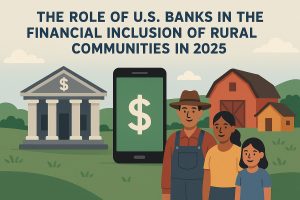Navigating the financial world as a college student can be challenging, especially when it comes to building credit. Having a credit card tailored for students can provide financial flexibility, teach responsible spending habits, and help establish a strong credit history.
In 2024, a variety of credit cards cater specifically to students in the US, offering features like cashback rewards, low-interest rates, and tools to build credit responsibly. Below, we explore the best options and what makes them stand out.
Understanding why college students need credit cards

For college students, owning a credit card is more than just a convenience; it is a vital tool for establishing financial independence. A credit card can help students build a credit history, which is essential for future financial milestones like renting an apartment, purchasing a car, or applying for a mortgage. Lenders often use credit scores to evaluate financial responsibility, and starting early with a student credit card can set the foundation for a strong score.
Moreover, credit cards can act as a financial safety net. College students often face unexpected expenses, such as medical bills, car repairs, or urgent travel. A credit card provides access to funds during emergencies, preventing the need for high-interest payday loans or borrowing from friends and family. Additionally, many credit cards offer fraud protection, which can safeguard students from unauthorized transactions and identity theft.
Credit cards also teach students about financial responsibility. Learning to pay off balances in full and on time each month fosters good habits that will benefit them for years. Many student credit cards include tools for tracking spending and setting budgets, making it easier to manage finances effectively.
Key features to look for in a student credit card
When selecting a credit card, college students should focus on features that align with their needs and financial goals. One of the most important aspects to consider is whether the card offers rewards. Many student credit cards provide cashback on everyday purchases, such as groceries, dining, and transportation. These rewards can help offset expenses and make spending more rewarding.
Another crucial factor is the card’s annual percentage rate (APR). While students should aim to pay off their balances in full each month, emergencies may occasionally require carrying a balance. Cards with low-interest rates minimize the cost of borrowing in such situations. Additionally, some cards offer introductory 0% APR periods, which can be particularly useful for larger, planned purchases.
Lastly, students should prioritize cards with no annual fees. As many college students operate on tight budgets, avoiding unnecessary costs is essential. Some student credit cards also waive foreign transaction fees, making them an excellent choice for those who plan to study abroad or travel internationally during their college years.
How to build credit responsibly with a student credit card
While student credit cards offer numerous benefits, they also come with responsibilities. One of the most important habits to develop is paying off the full balance each month. Carrying a balance accrues interest, which can quickly add up and lead to debt. Setting up automatic payments or reminders can help ensure timely payments and avoid late fees.
Another key practice is keeping credit utilization low. Credit utilization refers to the percentage of available credit being used. For example, if a student has a $1,000 credit limit and spends $300, their utilization rate is 30%. Experts recommend keeping this rate below 30% to maintain a healthy credit score. Staying mindful of spending and regularly monitoring account activity can help students stay within this range.
Building credit also involves patience and consistency. Credit scores improve over time as students demonstrate responsible usage. Regularly checking credit reports for errors and inaccuracies is crucial to maintaining a positive credit history. Many student credit cards offer free access to credit scores and reports, providing valuable insights into progress.
Top student credit cards to consider in 2024
The options available to students in 2024 reflect a growing recognition of their unique financial needs. Several cards stand out for their tailored benefits. For example, some cards focus on rewards programs, offering cashback on categories that resonate with students’ spending patterns. Others emphasize tools for credit building, such as regular credit line increases for responsible use and free financial education resources.
Some credit cards also offer incentives for good grades. For instance, students with a GPA above a certain threshold may earn a statement credit as a reward for academic achievement. These programs not only encourage responsible financial behavior but also celebrate students’ hard work and dedication to their studies.
Security deposit credit cards, often known as secured cards, are another excellent option for students with limited credit histories. These cards require an initial deposit that acts as the credit limit, reducing the risk for issuers while allowing students to build credit. Over time, responsible use can lead to upgrades to unsecured cards, providing more flexibility and rewards.
Making the most of a student credit card
Once students have selected a credit card, maximizing its benefits requires strategic use. One way to do this is by using the card for regular, budgeted expenses, such as groceries or utility bills. By doing so, students can earn rewards while building their credit. It is important to avoid using the card for impulse purchases or overspending, as this can lead to financial strain.
Another strategy is to take advantage of perks and benefits offered by the card issuer. Many student credit cards provide access to resources like free credit monitoring, budgeting tools, and financial literacy programs. These features can help students stay informed and make better financial decisions.
Finally, students should periodically review their credit card usage and benefits. As their financial needs evolve, they may outgrow their student credit card and qualify for more advanced options with higher rewards and additional perks. Transitioning to a new card should be done thoughtfully, ensuring it aligns with long-term financial goals.
Conclusion
In conclusion, student credit cards in 2024 offer a wealth of opportunities for college students in the US to build credit, learn financial responsibility, and enjoy valuable rewards. By understanding the key features to look for, practicing responsible credit usage, and leveraging the benefits offered, students can set themselves on a path to financial success. With careful consideration and mindful spending, these cards can serve as a stepping stone to a brighter financial future.






